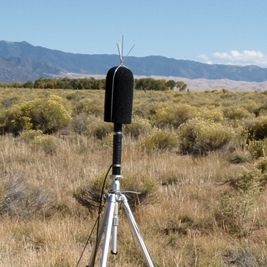NPS to study how soundscape quality affects park visitors
Effects of Noise on Wildlife, Human impacts, News, Science, Wildlands Add comments For over a decade, the National Park Service has been on the forefront of public lands agencies in addressing the role of sound and noise on both wildlife and park visitors. NPS’s Natural Sounds and Night Skies Division has catalyzed baseline acoustic monitoring in seventeen parks, and carried out groundbreaking research on the effects of noise on wildlife.
For over a decade, the National Park Service has been on the forefront of public lands agencies in addressing the role of sound and noise on both wildlife and park visitors. NPS’s Natural Sounds and Night Skies Division has catalyzed baseline acoustic monitoring in seventeen parks, and carried out groundbreaking research on the effects of noise on wildlife.
Now, NPS is planning a national survey on how the quality of park soundscapes affects visitation at national parks, and the economies of gateway communities. An August 9 Federal Register notice is seeking public comment on the value such a study, with the hope of doing a small-scale pilot survey in 2014, in preparation for the full study in 2015. The last time NPS sought comments on a similar proposal, they received no public comments and did not proceed. Now’s the time to chime in, as comments close on September 9. (Go here, and be sure to note the topics they want input on, and send your comments to both email addresses listed.)
“In addition to parsing out the extent to which visitors value being able to hear the sounds of nature, the study will provide other useful information such as how acoustic conditions affect the likelihood of repeat visitation to national parks,” the agency said in a summary of the survey.
At a daylong public outreach workshop on Noise in Communities and Natural Areas earlier this month (which I was fortunate to attend), Kurt Fristrup and Frank Turina outlined some of the ongoing soundscape work in parks. Turina described a pilot project at Rocky Mountain National park that uses flashing signs to notify motorcyclists of the noise levels of their bikes (much like instantaneous speed-tracking signs), with the goal of encouraging riders to moderate their noise while enjoying park roads. Fristrup shared some fascinating research revealing that hikers on the Hermit Trail at the Grand Canyon nearly universally reported lower levels of overall satisfaction with their visitor experience after overflight helicopters start flying each morning. Hikers were asked to rate their experience on a 7-point scale, from Very Pleasant to Very Unpleasant. Prior to the start of flights, Very Pleasant (7) received was the most chosen rating, with no one choosing the lower Unpleasant to Very Unpleasant ratings of 3, 2, or 1. After flights began, the graph of responses shifted distinctly toward the less pleasant ratings: the number of people rating their experience at 7 dropped dramatically and the lower ratings, all the way down to 1, joined the mix.
